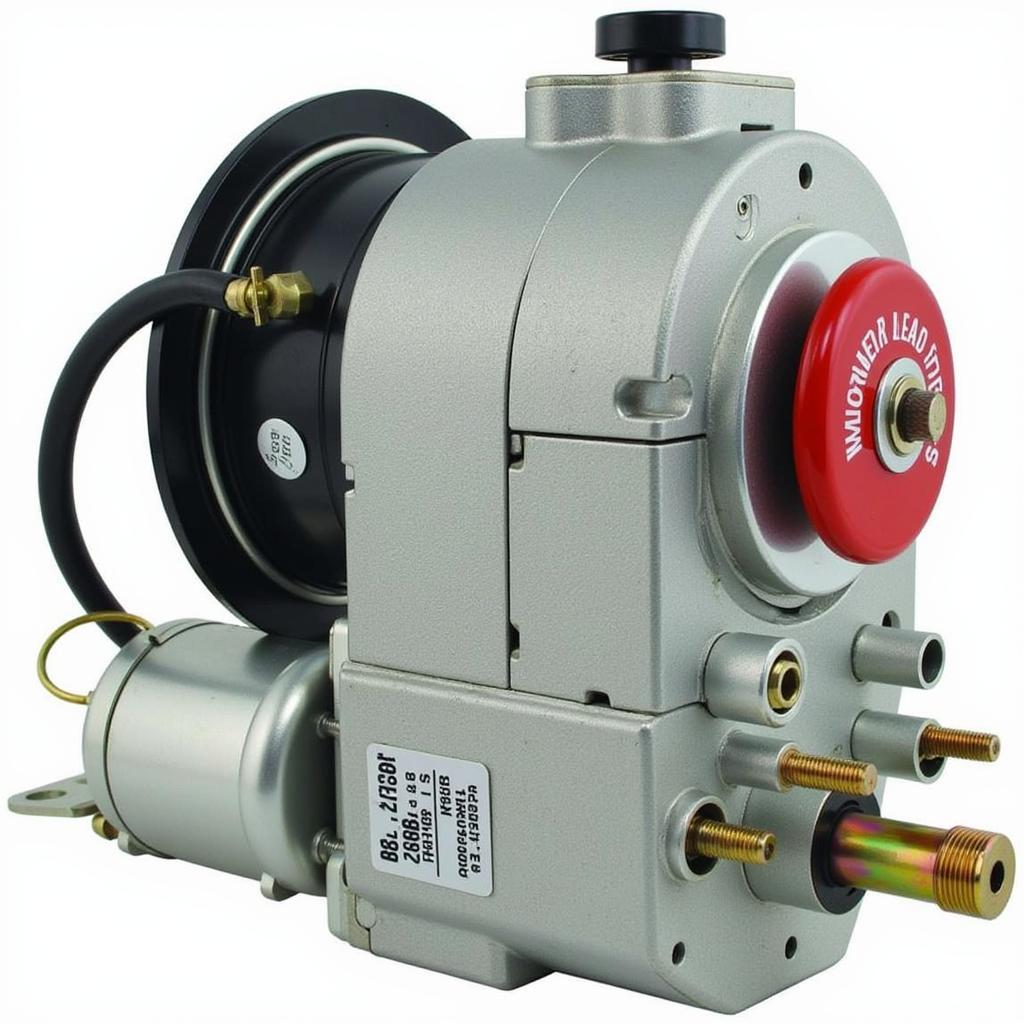The parking brake and brake fluid warning light flashing on your dashboard can be a nerve-wracking experience. While it might seem like a complicated issue, understanding what triggers these warnings can empower you to address the problem effectively. This article dives into the common causes of a parking brake & brake fluid warning light, helping you navigate this potentially stressful situation.
Understanding Your Car’s Brake System Warnings
Your car uses warning lights to communicate crucial information about its health. When it comes to your brakes, there are typically two main lights to watch out for:
- Parking Brake Light: This light, often depicted as a circle with a “P” inside or the word “BRAKE,” indicates that your parking brake is engaged.
- Brake Fluid Warning Light: This light, typically a red circle with an exclamation mark (!) inside and the word “BRAKE,” signals a problem with your brake fluid system.
While these lights serve different purposes, they are closely related. Let’s delve deeper into what can cause these warning lights to illuminate.
Common Causes of a Parking Brake Warning Light
The most common reason for the parking brake warning light is simple: your parking brake is engaged. Before panicking, make sure the parking brake is fully released.
However, if the light persists even after releasing the parking brake, it could point to other issues such as:
- Faulty Parking Brake Switch: The switch that senses the parking brake position can wear out or malfunction, sending a false signal to your dashboard.
- Worn Brake Cables: Over time, the cables responsible for engaging and disengaging the parking brake can become stretched or corroded, preventing the brake from fully releasing.
- Dashboard Electrical Problems: In rare cases, an electrical issue within the dashboard itself could cause the parking brake light to malfunction.
Common Causes of a Brake Fluid Warning Light
The brake fluid warning light usually indicates a loss of pressure within the hydraulic braking system. Here are some of the most prevalent culprits:
- Low Brake Fluid Level: Brake fluid naturally depletes over time. If the fluid level drops too low, it can trigger the warning light. This often points to worn brake pads, which necessitates a brake fluid top-up during pad replacement.
- Brake Fluid Leak: A leak in the brake lines, hoses, calipers, or wheel cylinders can lead to a dangerous loss of brake fluid and pressure. Identifying and addressing leaks promptly is crucial for safe driving.
- Worn Brake Master Cylinder: This vital component is responsible for generating the hydraulic pressure needed for braking. If the master cylinder seals wear out, it can cause fluid loss and trigger the warning light.
What to Do When Your Brake Warning Lights Come On
If either the parking brake or brake fluid warning light illuminates on your dashboard, it’s crucial to take immediate action:
- Safely Pull Over: Find a safe location to pull over as soon as possible. Driving with compromised brakes is extremely dangerous.
- Check the Parking Brake: Ensure your parking brake is fully disengaged. If the light persists, it signifies a potential problem beyond the brake’s position.
- Inspect Brake Fluid Level: With the engine off and parked on level ground, carefully check the brake fluid level in the reservoir. If it’s low, adding brake fluid might temporarily resolve the issue, but a mechanic should inspect the system for leaks or worn components.
- Seek Professional Help: If the warning light remains illuminated, or you suspect a leak or other brake system malfunction, do not attempt to drive the vehicle. Contact a qualified mechanic specializing in brake repair to diagnose and fix the issue.
FAQs: Parking Brake & Brake Fluid Warning Lights
Q: Can I drive with the parking brake light on?
A: While you might be able to drive short distances, it’s not recommended. Driving with the parking brake engaged can lead to brake overheating, premature wear, and potential damage.
Q: Is it safe to drive with the brake fluid warning light on?
A: No, it is extremely dangerous to drive with the brake fluid warning light illuminated. This signifies a loss of brake fluid or pressure, significantly compromising your ability to stop the vehicle safely.
Q: How often should I check my brake fluid level?
A: It’s good practice to visually inspect your brake fluid level at least once a month.
Q: What type of brake fluid does my car need?
A: Refer to your vehicle owner’s manual for the recommended brake fluid type and specifications. Using the wrong type of brake fluid can damage your braking system.
Q: How much does it cost to fix a brake fluid leak?
A: The cost of repair depends on the severity and location of the leak. It could range from a simple hose replacement to more complex repairs involving the master cylinder or brake lines.
Don’t Ignore Brake Warning Lights
Your vehicle’s braking system is crucial for your safety and the safety of others on the road. Ignoring warning lights related to your brakes can have serious consequences.
Remember, a flashing parking brake or brake fluid warning light is a clear signal that your car needs attention. Promptly addressing these issues ensures your vehicle remains safe and roadworthy. If you’re experiencing issues with your brake warning lights and are looking for expert assistance, consider exploring the resources available for specific car models, such as those for the 1999 Honda Civic brake warning light, Lexus ES300 brake warning light, or Toyota 4Runner brake system warning light. For owners of Kia Sportage, understanding the Kia Sportage warning signs brakes can be incredibly helpful. Similarly, if you’re driving a classic like the 1990 Jeep Wrangler, knowing how to repair 1990 Jeep Wrangler brake warning light can be invaluable. By staying informed and proactive, you can ensure your car’s braking system remains in optimal condition, providing you with peace of mind on the road.


